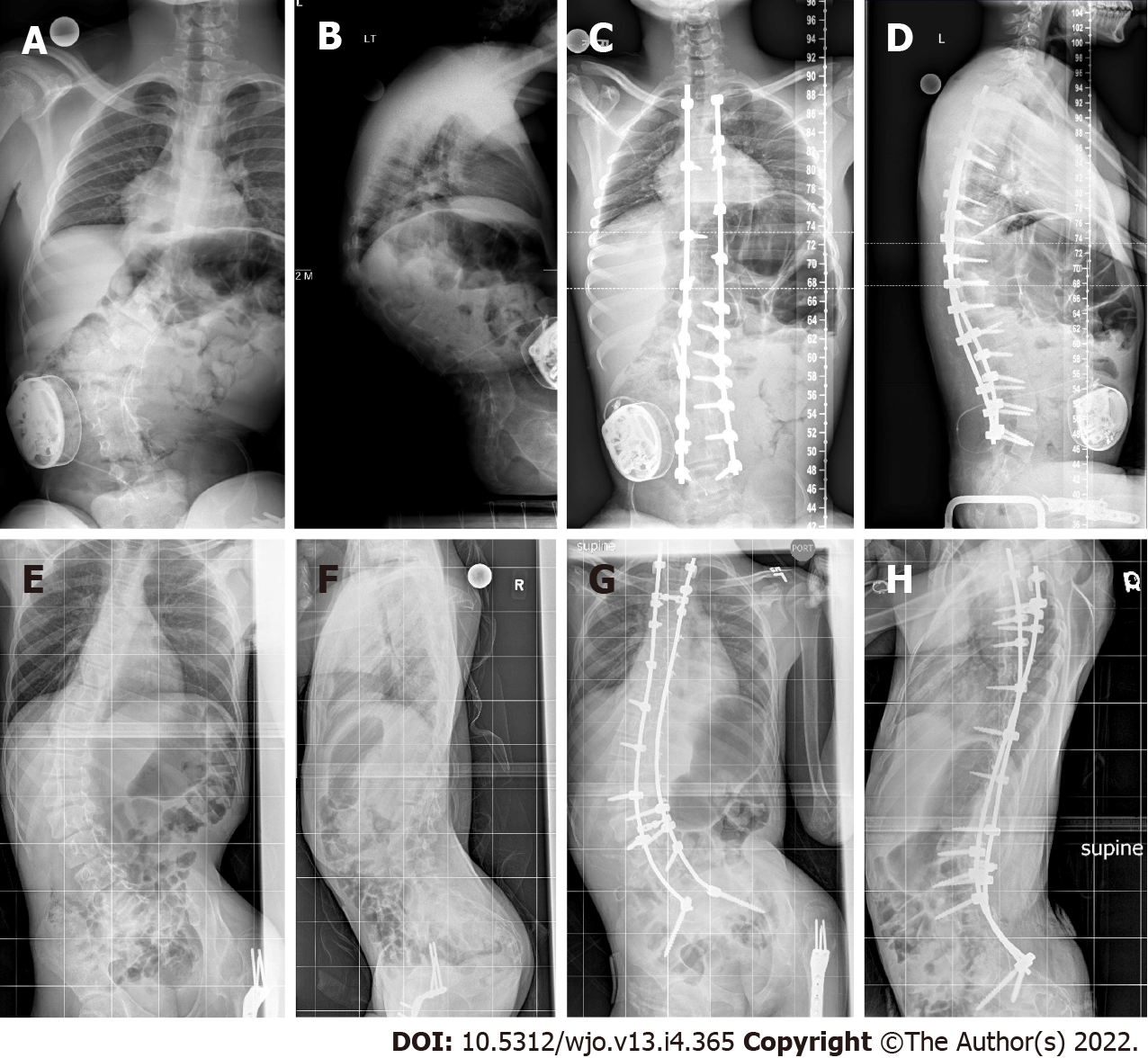Copyright
©The Author(s) 2022.
World J Orthop. Apr 18, 2022; 13(4): 365-372
Published online Apr 18, 2022. doi: 10.5312/wjo.v13.i4.365
Published online Apr 18, 2022. doi: 10.5312/wjo.v13.i4.365
Figure 1 Sample cases of patients who were fused short of the pelvis or whose fusion included the pelvis.
A, B: Preoperative anteroposterior (A) and lateral (B) radiographs demonstrating scoliosis with a lumbar curve Cobb angle of 58˚ and pelvic obliquity of 12˚; C, D: Fusion was stopped at L5, and postoperative anteroposterior (C) and lateral (D) radiographs show the lumbar curve Cobb angle at 8˚ and pelvic obliquity at 3˚; E, F: Preoperative anteroposterior (E) and lateral (F) radiographs demonstrating scoliosis with a lumbar curve Cobb angle of 52˚ and pelvic obliquity of 19˚; G, H: Fusion was carried out to the pelvis, and postoperative anteroposterior (G) and lateral (H) radiographs show a lumbar curve Cobb angle of 48˚ and pelvic obliquity of 12˚.
- Citation: Strom SF, Hess MC, Jardaly AH, Conklin MJ, Gilbert SR. Is it necessary to fuse to the pelvis when correcting scoliosis in cerebral palsy? World J Orthop 2022; 13(4): 365-372
- URL: https://www.wjgnet.com/2218-5836/full/v13/i4/365.htm
- DOI: https://dx.doi.org/10.5312/wjo.v13.i4.365









